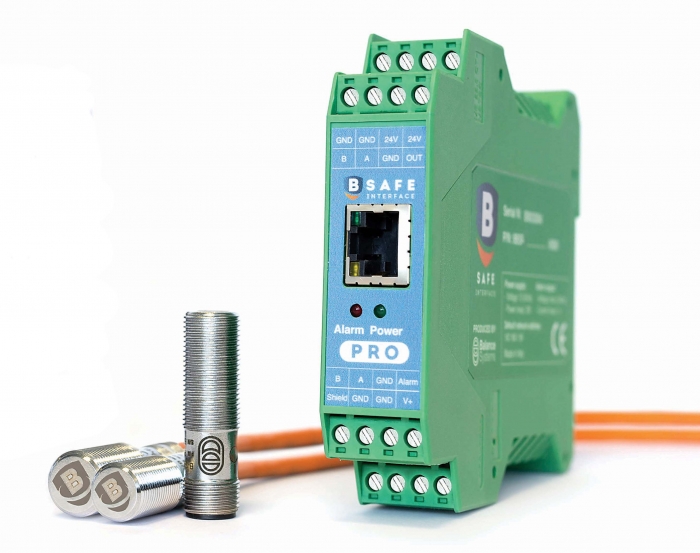Right now, what’s providing the main push toward advanced digital technology at machining firms? Is it a sudden influx of more knowledgeable, forward-thinking leaders at these companies? No, it’s the threat that has driven millions of people from workplaces all over the world: the spread of the coronavirus.
That’s the view of Francesco D’Alessandro, branch manager at Balance Systems Corp., Wixom, Michigan. The business offers equipment that falls under the umbrella of Industry 4.0, which aims to improve data collection and interconnectivity of industrial machinery. He believes that this equipment can help machining firms cope with the consequences of the pandemic. But he also thinks there’s a good chance that the people in charge at these companies aren’t even aware of what’s possible.
“Among machine users, I think many decision-makers don’t know that today there is technology that can help them,” he said. “By making a minimal investment in this technology, they can do a variety of monitoring and maintenance operations remotely.”

Allowing remote spindle monitoring, the B-Safe system comprises a sensor unit with a cable, as well as an electronic interface. Image courtesy of Balance Systems
Until recently, D’Alessandro said, many people in the machining industry who did know about this technology failed to embrace it due to “cultural problems” at both small shops and large manufacturing plants.
“The former are skeptical of technological novelties, which they often see merely as a cost and not as an investment,” he said. “As for the latter, their internal path for product validation can be long and have some roadblocks.”
Now, however, D’Alessandro thinks that the pandemic is forcing machining operations of all sizes to consider speedy adoption of advanced technology if they want to gain an edge over competitors or even stay in business.
As an example of this type of technology, he mentioned Balance Systems’ B-Safe spindle monitoring system, which comprises a sensor unit with a cable, along with an electronic interface. The sensor unit attaches to a machine spindle. The cable carries data from the unit to the electronic interface, which is located in a nearby electrical cabinet.
One of B-Safe’s main functions is to detect any type of collision during machining. Connected to the internet, B-Safe allows users to remotely monitor machines and receive notification in the event of a collision. Continuous machine monitoring can be done remotely via laptop or cellphone.
In addition to watching for collisions, B-Safe lets remote users keep tabs on vibration and temperature when machining.
“If the cutter or spindle is not in good condition, the vibration and temperature generated are typically higher than normal,” D’Alessandro said. If this “red flag” is observed while monitoring a machine from home, “a manager can call the plant and tell the operator to double-check the machine to make sure everything is in order.”
B-Safe also features a predictive maintenance function that estimates the remaining lifetime of a spindle based on use of a machine tool. He said plant or maintenance managers working remotely can be alerted on cellphones when spindle life reaches a certain preset threshold. After receiving an alert, a manager may call a repair company to arrange spindle service before a breakdown occurs.
Remote machine monitoring also is possible with Balance Systems’ VM25 and VM15 process control systems for grinding machines, D’Alessandro said. When connected to the internet, these systems can be checked by service engineers working from home.
Unlike B-Safe, he said, these systems allow remote maintenance via the internet.
“Because of machine wear, mechanical conditions can be different after six months of operation, so the parameters of these systems may need to be adjusted a little,” D’Alessandro said. “The same thing might be necessary if a grinding wheel is changed. If that’s the case, a service engineer using our service package can connect via the internet and adjust those parameters remotely.”
He recently has seen more systems introduced by other companies that enable remote machine monitoring. He also reported knowing two major machine tool OEMs that have embedded remote monitoring technology in their machining centers.
If COVID-19 stays around much longer, more developments like these certainly will follow.
Contact Details
Related Glossary Terms
- centers
centers
Cone-shaped pins that support a workpiece by one or two ends during machining. The centers fit into holes drilled in the workpiece ends. Centers that turn with the workpiece are called “live” centers; those that do not are called “dead” centers.
- grinding
grinding
Machining operation in which material is removed from the workpiece by a powered abrasive wheel, stone, belt, paste, sheet, compound, slurry, etc. Takes various forms: surface grinding (creates flat and/or squared surfaces); cylindrical grinding (for external cylindrical and tapered shapes, fillets, undercuts, etc.); centerless grinding; chamfering; thread and form grinding; tool and cutter grinding; offhand grinding; lapping and polishing (grinding with extremely fine grits to create ultrasmooth surfaces); honing; and disc grinding.
- grinding wheel
grinding wheel
Wheel formed from abrasive material mixed in a suitable matrix. Takes a variety of shapes but falls into two basic categories: one that cuts on its periphery, as in reciprocating grinding, and one that cuts on its side or face, as in tool and cutter grinding.
- process control
process control
Method of monitoring a process. Relates to electronic hardware and instrumentation used in automated process control. See in-process gaging, inspection; SPC, statistical process control.








